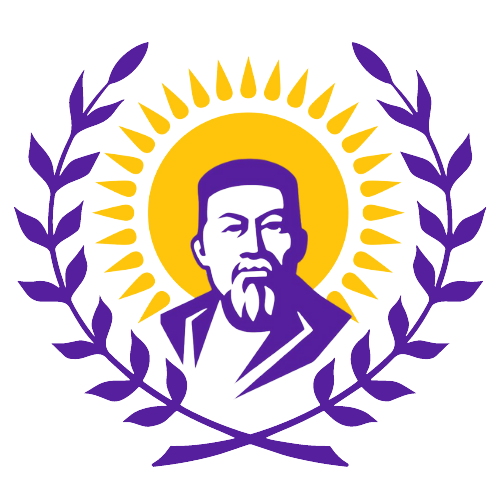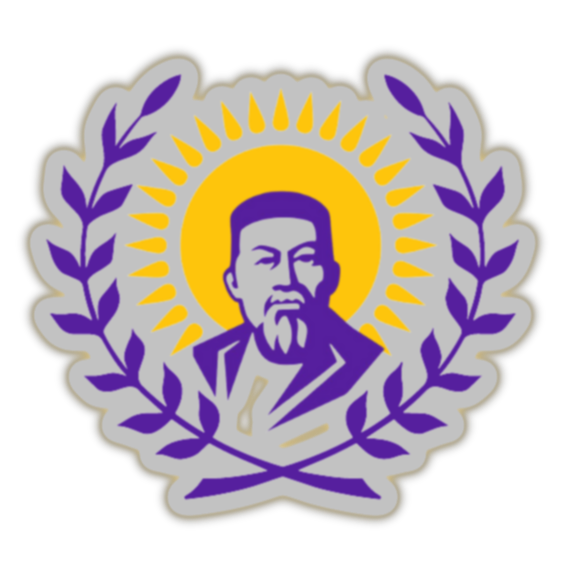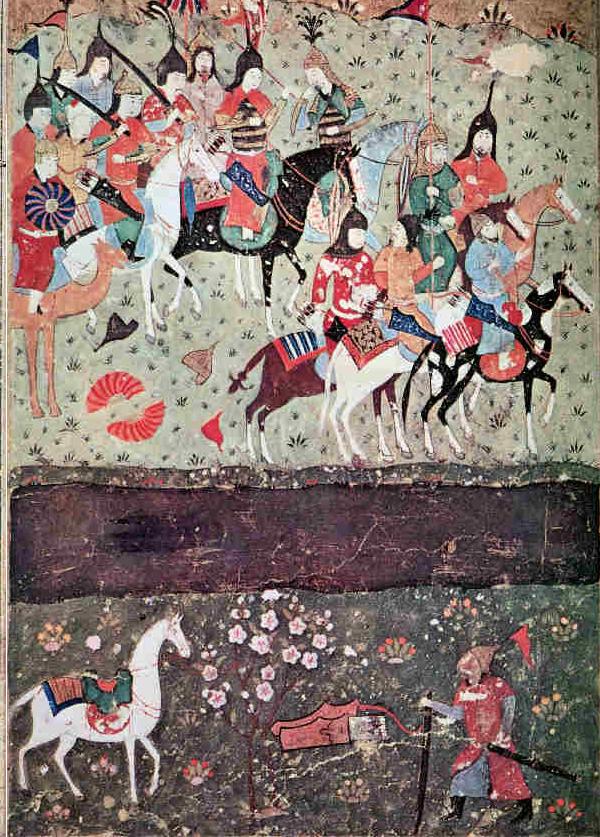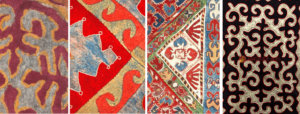Ayşe Zarakol’s book Before the West: The Rise and Fall of Eastern World Orders challenges our understanding of the history of international relations and makes sense of the apparently chaotic and brutal conquests of the nomadic warriors from the Mongol steppes. As Professor Zarakol explains, the influence of the Mongols and of their thirteenth-century leader, Genghis Khan, has extended beyond the borders of their empire, beyond politics, and beyond their era. They introduced a new type of sovereignty and empire-making that can still be seen today and that laid the foundations for a history shared by many people of both the East and the West.
Interview with Ayşe Zarakol

Ayşe Zarakol is Professor of International Relations at the University of Cambridge, where she also has an appointment as a Politics Fellow at Emmanuel College. Her research is at the intersection of historical sociology and international relations, focusing on East-West relations in the international system, the history and future of world order(s), conceptualizations of modernity and sovereignty, rising and declining powers, and Turkish politics in comparative perspective. Her new book, Before the West: The Rise and Fall of Eastern World Orders, which advances an alternative global history for international relations focused on (Eur)asia, was published by Cambridge University Press in March 2022. In this book, Dr. Zarakol re-theorizes sovereignty, order, and decline from a more global perspective.
In your book Before the West: The Rise and Fall of Eastern World Orders, you discuss how Asia first became unified through Genghis Khan’s conquest of the world and highlight the high level of centralization of the Chinggisid model of sovereignty. Tell us, please, what was Genghis Khan’s role in the formation of Eastern civilization? How did the civilization of the Mongol Empire determine the specific history of Asian civilization? How do you argue your conclusions?
The basic argument I make in the book is that even though Asia or Eurasia had been a connected space before the thirteenth century, the thirteenth century is still a turning point for this continent because this was when much of the space came under the rule of the same empire, the same person. The Mongol Empire played a role in Asian history similar to that of the Roman Empire in European history, because being under the same type of governance structure has a very significant influence across Asia and Eurasia that we can trace for decades and centuries to come.
Although some of the practices and institutions I study in the book predate the Mongol Empire, the Mongols played a role in spreading and diffusing them. As a package, they became attached to the person and the story of Genghis Khan. His example became very significant, and others aspired to be like him. Even in regions that were not under his direct rule, you can see the influences. I am an International Relations scholar, and I argue that Genghis Khan’s empire essentially created a world order similar to our modern international order, because it covered much of the known world at the time. Its sovereignty model, as we call it—the kind of statehood model that they introduced—spread and influenced other geographies beyond Central Asia. That was a major contribution. At least for the next four centuries, until the seventeenth century (and perhaps even beyond), you can see empires in different parts of Asia that are clearly influenced by the Mongols.

The book looks, first, at the Mongol Empire and the four Khanates as one world order. Then I have a chapter that is dedicated to studying the Timurid Empire, together with the early Ming Dynasty (of China), as empires influenced by the Mongols; this is easy enough to see in the case of Timur, but the early Ming dynasty, I argue, was also very much influenced by the Mongol model.
In the next chapter, I look at the influences of the Mongol Empire on the great Islamic empires of the fifteenth and sixteenth centuries: the Ottomans, the Safavids, the Mughals, and also to some extent the Shaybanids—between them they covered much of the world in the sixteenth century. Finally, I have a chapter looking at the influences of that world on Europe, on Moscow, Russia—places that we call the West today were also influenced. So that’s the historical story, essentially.

How did you come to your conclusions?
I work on sovereign evolution of statehood and the evolution of international order-making. In International Relations so much of our work in that areas has traditionally focused on Europe and the European trajectory. I was trying to come up with some comparisons outside of Europe—how the story of sovereignty unfolded elsewhere. I was working on the Ottomans originally, because that case was more familiar to me, and I started seeing historians arguing that the Ottoman conceptions of law and sovereignty in the sixteenth century had very clear Timurid, and even Mongol influences and origins. Then I thought, well, if the Ottomans were influenced by the Mongol Empire so many centuries later, others directly ruled by them must have been as well. Thus, I started pulling that thread across Eurasia.
I discovered that historiography of each region is very specialized. Historians usually study very specific countries and regions. But in recent years, historians of different parts of the world had separately been arguing that the Mongol Empire influenced their part of the world, countering more narratives that they had only engaged in destruction.
For example, even though the Ming were not Mongols—that they rejected the Yuan Dynasty and all the Mongol stuff—in recent years, historians of the early Ming have shown that the early Ming emperors did not act like traditional Chinese emperors. They were warrior emperors, they were interested in military campaigns and external recognition, they centralized power…and you cannot explain that except by reference to the Yuan/Mongol legacy.
What I did in the book was to bring all these separate accounts of different parts of Asia and Eurasia together into one big, connected story. I rely on the work of the historians who discovered these facts for their own regions. But as an International Relations scholar, I can focus on the big picture and tie it all together.
We are particularly interested in Central Asia. As you know, some countries—like Kazakhstan—consider themselves the heirs of the Golden Horde, but at the same time, statehood or khaganates existed long before the Mongol invasion, which led to the destruction of many states and cultural monuments during the thirteenth century (which was the Golden Age of Enlightenment of the Islamic World in this region). What is the legacy of the Mongols in Central Asia?
Many things predate the thirteenth century and have a long history, including various Turkic practices. I do not claim in the book that Genghis Khan invented everything. Central Asia was connected to the Persianate world, which was very advanced, and to China, the Sinosphere. The difference was that in the thirteenth century is that Eurasia was very fragmented politically. The Mongols of Genghis Khan were essentially able to unite different parts of Asia. They could even have brought Europe into the mix, by the way, but they stopped — and Europe at that point remained peripheral. But by connecting East and West Asia, the Mongols supercharged development on the continent because they were able to take some practices from East and export them to the West, and some practices from the West and export them to the East, and everything in-between. The connection is really what facilitates this moment of legacy making.
By connecting East and West Asia, the Mongols supercharged development on the continent because they were able to take some practices from East and export them to the West, and some practices from the West and export them to the East, and everything in-between.
The initial conquests were quite brutal. I’m not an apologist for Mongol conquest—I’m sure it was terrible to live through them—but at the same time, once the conquests had been completed, the empire did have this function of, as I was saying, connecting different parts of Asia. They had an advanced postal system reliant on horses that spanned the whole continent and facilitated trade as well the movement of people (artisans, traders, and so on).
Some historians call this the Genghisid exchange—similar to the Columbian exchange that brought New World goods to the Old World (and vice versa). You can see the influence on Islamic art for instance. Islamic art was very different before the Mongol conquests, but as a result of the Mongol Empire you have the very clear Chinese influences on tile-making. Again, I don’t want to come across as an apologist for the Mongol empire (or any empire), but at the same time, we have to acknowledge that a lot of things that we consider to be great achievements of civilization would not have been possible without it.
The same thing with the Timurids—again, the influence on art and architecture in Timurid cities such as Samarkand and Bukhara is visible to this day. After the collapse of the Timurid Empire, many of the artisans and intellectuals that they sponsored ended up traveling to Anatolia and Iran, and of course with the Mughals they went into Indian subcontinent. Both the Mongols and the Timurids ended up really influencing those subsequent empires. Beyond what I talk about in the book—the political influences, the influence on the type of sovereignty and the type of empire-making—there are major influences on art, architecture, political theory, literature, and all that.
Even in China—I was talking about the early Ming previously—we can see this. To give one example, one of the things the Mongols were very interested in was the study of skies. This probably predates them—it’s not just a Mongol practice, it’s a Turkic practice—but they spread the idea that governments/ruling dynasties should sponsor astronomy/astrology. Wherever we see the influences of Mongol-style empire-making, you can see ruling dynasties sponsoring observatories. Samarkand is a good example of this. The early Ming empire also sponsored astronomers (often Muslim astronomers, interestingly). So there are all sorts of unexpected positive influences, but of course also terrible violence. It is a mixture.
How did Mongol political order influence China and Russia in particular? For Russia, the question of belonging to East or West was always a crucial one, and maybe for China too?
I discuss this quite a bit in the book. So what I argue in the book is that this is a type of centralized rule where the Khan—or whatever the leader is called in the local context—is the ultimate law-giver. That’s an unusual claim to authority because even though there are many kings and rulers across history, they are often accountable to religious authority, the things they say have to be approved by the ulama, the church etc. In the context of China Confucianism was a check on centralized authority. Before the Mongols come on the scene, the emperors were not that powerful (with the exception of much earlier history).
By contrast, what Genghis Khan essentially says is: I am the lawgiver, I’m not responsible to anybody because I’m a world conqueror, so I make all the laws. What we see in places influenced by this model is essentially great centralization of authority. That’s why sixteenth-century Ottoman or Mughal rule, for instance, is unusual in contrast to earlier Islamic models of governance: suddenly you have the rulers essentially saying they know better than the ulama (jurists) what the laws should be and making laws that seem to supersede sharia (religious law) — and that’s a direct line to the Mongols.

Similarly, in China their influence is one of centralization. As I said before, before Mongols takeover, the Chinese emperors were not so powerful. The Yuan Dynasty, direct descendants of Genghis Khan, change that dynamic. The Yuan emperors, as well the early Ming emperors, and also, I suppose some of the early Qing emperors (though I do not discuss the Qing in the book), were all centralizers—as I said, they aspired to be world-conquerors. As the Mongol influence fades in the Ming period, you start seeing in the growing influence of Confucianism and isolationism, by contrast, and the emperors become more symbolic and withdrawn.
In the Russian case, or really in the case of Muscovy—it’s better to say Moscow than Russia because while Moscow was ruled by the Golden Horde, it also benefited from that rule at the expense of other Russian cities—there is a very direct influence that we can see, and historians of Russia have written about it. Their conception of sovereignty was also rather changed by their experience under the Horde. People may know that there were references to in the sixteenth century to the idea that Muscovy was a third Rome, hence the title of Tsar (Caesar). But historians have also shown that the Russian Tsars in this period were acting more like the Mongol khans. In other words, you see a much more extreme centralization of authority both with Ivan III and, especially, with Ivan IV. I discuss these influences in the book. However, I also argue that some of the intolerant excesses of Ivan IV for example cannot be laid at the feet of the Mongols. After all, the Mongols, as I said, were brutal, but they were relatively pluralist in their rule vis-à-vis cultural and religious practice—they did not try to control their subjects’ religious faith and so on. They were generally relaxed about such things. Efforts to police the boundaries of religion, persecute witchcraft, and so on are more rooted in European and Christian history. In the excesses of Ivan the Terrible, I think we see perhaps a combination of the centralizing power of the Mongols with the Christian persecution of divergent practices, paranoia about witchcraft, and so on. We cannot blame the Mongols for all the terrible things their successor states do.
The Mongols were generally fine with pluralism. Even when the Genghisid sovereigns converted to Islam or other religions, they never—unlike their European counterparts—became religious zealots. Not because they were outstanding liberals but because they saw themselves as above it all, including religion.
Let’s move on to the concepts of East and West. What do you think belongs in the category “East” and what belongs in the category “West”? And how does the study of “Eastern civilization” help the study of the West, history, and/or contemporary politics? If we just substitute the Eastern lens for Eurocentrism, do we risk seeing another imbalanced picture?
On the one hand, “East” and “West”—these are modern terms representing a modern division. I readily admit there are some problems with using such terms to think about history. In the book, I discuss the upsides and downsides of this. At the same time it is true that there are some different political trajectories in Asia; the European experience cannot be assumed to cover them. And in order to make history intelligible to modern discussions, you have to use terms that contemporary readers will understand. It is a fine needle to thread. Even the term “Asia” is Eurocentric— that is the word the Ancient Greeks used to refer to Anatolia and West Asia. We do have to operate with the terms that we have, knowing that they are problematic at times.
When I talk about the rise and fall of the Eastern world orders, I’m not trying to suggest an unchanging essence to the East. Instead, what I’m trying to assert is the idea that the European trajectory is not necessarily always generalizable, and Europe was not always dominant, and the histories of other places also deserve to be told. Furthermore, if we want to think about what the future may look like, there is no guarantee that it’s going to look like the last 100 or 200 years. This means we need more historical examples to think with, different examples that can better spark our imagination about what may be next. That’s what I’m doing.
If you were living in the thirteenth, fourteenth, fifteenth, or sixteenth century, you would not think Europe was the center of the world, you would think “Asia” (whatever you called it) was the center of the world
I think there are certain similarities in the time period that I am studying that make it comparable in some ways to modern international relations. For instance, my focus is on centralization; the nation-state is also organized around centralized sovereignty. It’s not centralized around the person of the ruler. It’s centralized, territorialized sovereignty. All the empires I look at aimed to be world empires—they had universal claims. So that’s similar to modern international order which also aims for universality. At the same time, of course, there are differences as well: if you were living in the thirteenth, fourteenth, fifteenth, or sixteenth century, you would not think Europe was the center of the world, you would think “Asia” (whatever you called it) was the center of the world. That’s where the excitement was, economically, culturally, politically.
So these are the points that I’m trying to make, but not in a jingoistic manner. And I am not trying to advocate for Asia-centrism in the place of Eurocentrism. What I am saying is the more we fill out the missing parts of the historical picture, the more balanced it will be. And then hopefully others will talk about Africa and the Americas (and other time periods as well).
Your book is praised for introducing new concepts and debates—such as order and decline—into international relations. Could you please tell us more about this contribution?
What I argue is that the discipline of International Relations focuses only on great-power rise and decline because it studies European history from the seventeenth century onwards, which is a story of European regional order becoming global. From that vantage point the international order itself seems to be always expanding and it’s only the specific great powers that rise and decline: the Netherlands, then Great Britain, the US, etc. What I say in the book by contrast is that if we take a bigger-picture view—if we study history at a more macro level—we realize that it’s not only great powers that can rise and decline, but international orders themselves. Even beyond that, in the book I have this notion of what I call “the ecumene,” such as deep norms, deep cultural understandings that underwrite world politics. For instance, we now take the nation-state for granted, but there were no nation-states in history. The deep belief that nation-states are natural things is part of our ecumene. We think nation-states were always around and will be here forever, but the people who lived in the thirteenth, fourteenth, fifteenth, or sixteenth centuries likewise thought the way they did things was going to last forever. Even those deep norms themselves can decline and change. The gist is that we need to separate great power vs order vs ecumene decline from each other and look at how orders fragment, how deep norms shift. We shouldn’t just look at great powers, we should study the deeper fabric of world politics as well.
We are currently witnessing an attempt to unite Turkic states, and it is not only Turkey that is taking the initiative on this, but also other countries with Turkic languages, including Central Asian countries. Is the creation of a union of Turkic states one of the geopolitical scenarios for a future world order? What are the prospects of such initiatives?
I know that there are efforts around this, but personally I don’t think it’s the way to go. I don’t believe it would even work. I’m not against some kind of collaboration. What I was trying to do in the book is tell a bigger story of connection that goes beyond ethnicity—the connection of Asia and Eurasia. It’s kind of remarkable to realize that Moscow, Beijing, Ankara, and so on were all under the control of the same empire at some point. And then of course their successor states took those models to India and so on. I obviously don’t advocate for Mongol-style rule, but I believe those of us in Eurasia should remember that there is a shared history that ties us—one that is not rooted in nationalist ideas because it dates to a time before nationalism. At any rate, the Mongols didn’t really care for nationalism, they didn’t have a notion of it—I mean, they used the word ulus, but it wasn’t the modern sense of ulus as a nation (as it is understood in many Turkic languages today), it was “me and my house (relatives).” Competing aristocratic Mongol houses would have no difficulty destroying each other. It goes without saying that regular people had no rights to begin with and nothing in common with the rulers except perhaps some linguistic ties.
Those of us in Eurasia should remember that there is a shared history that ties us—one that is not rooted in nationalist ideas because it dates to a time before nationalism.
In other words, if anything should bring Asia together, it’s not some kind of ethnic or linguistic tie but the fact that we have shared histories and experiences, just as Europeans do. Asia is not just East Asia: there is a bigger space that has been connected for centuries. We should remember that—and maybe remembering that can help us develop a more robust Asian identity. Why can’t I, as somebody from Turkey, say I’m Asian—which sounds ridiculous because that’s not what we do, but why not, right?!
The interview is originally published here.





